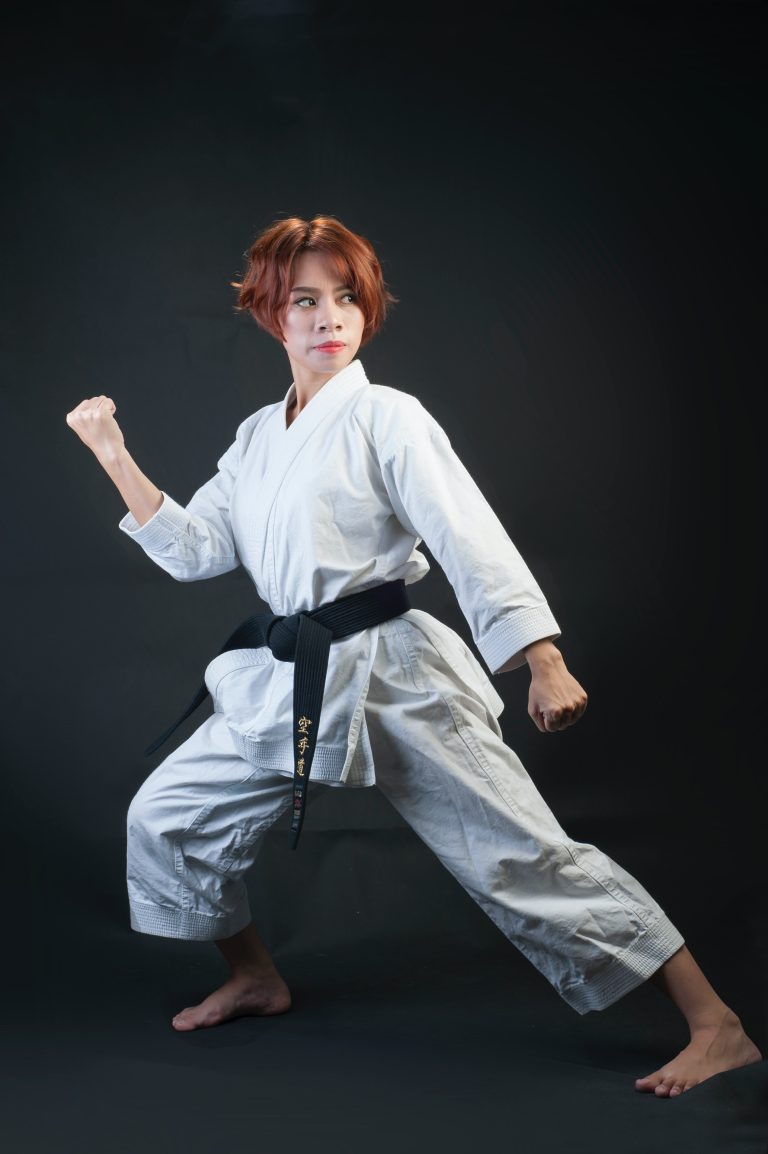How to learn karate at home: A comprehensive guide
Karate is a popular martial art that can be learned and practiced by people of all ages. It is a physical and mental discipline that helps to improve self-confidence, self-defense skills, agility, and overall health. While joining a dojo or attending a karate class is the best way to learn karate, there are several ways you can learn and practice karate at home.
In this guide, we will share with you some tips and techniques that will help you learn karate at home.
1. Start with the Basics
The first step to learning karate at home is to start with the basics. The basics of karate include the stances, punches, kicks, and blocks. You can find several online resources that provide videos and tutorials that demonstrate the proper form and technique for each basic move.
It is essential to focus on each move and practice it repeatedly until you feel comfortable with it. Start with the basics and work your way up to more advanced techniques.
2. Find a Qualified Instructor
While learning karate at home is possible, it is always best to have a qualified instructor who can guide you and provide feedback. A qualified instructor will help you learn the proper technique and ensure that you are practicing safely.
You can find a qualified instructor by searching online or by contacting your local martial arts school. Many martial arts schools offer online classes and private lessons that will allow you to learn and practice karate in the comfort of your own home.
3. Set a Practice Schedule
Learning karate at home requires discipline and commitment. It is essential to set a practice schedule and stick to it. Ideally, you should practice for at least 30 minutes each day.
With regular practice, you will gradually improve your technique, strength, and flexibility. You will also develop better coordination and focus.
4. Create a Dedicated Practice Space
To learn karate at home, you will need a dedicated practice space. The space should be open and free of clutter. It should also be well ventilated, well lit, and preferably have a soft surface like a mat or carpet.
You can use your garage, basement, or a spare room for your practice space. Make sure you have enough room to move around, and that the space is safe and secure.
5. Incorporate Strength and Conditioning Exercises
Karate requires strength, endurance, and flexibility. You can improve your fitness level by incorporating strength and conditioning exercises into your karate training.
Exercises like push-ups, sit-ups, and lunges are great for building strength and endurance. Yoga and stretching exercises are perfect for improving flexibility and balance.
6. Practice with a Partner
Practicing karate with a partner is an excellent way to improve your technique and develop your skills. A partner can provide feedback and help you to correct your form and technique.
If you don’t have a partner, you can use a punching bag or a training dummy to practice your moves.
7. Watch and Learn from Karate Videos
There are several online resources that provide access to karate videos and tutorials. Watching videos of experienced karate practitioners will help you to understand the proper form and technique.
You can find karate videos on YouTube, Vimeo, and other video-sharing platforms. Make sure to watch videos from reputable sources and follow the techniques carefully.
How can you learn karate at home: Frequently Asked Questions
Karate is a popular martial art that is not only a great form of exercise but can also help build one’s self-confidence, self-discipline and overall character. If you are interested in learning karate but cannot attend martial arts classes at a studio or gym, it is possible to learn this art form at home. Here are some frequently asked questions that you may have if you want to learn karate at home:
1. Can you really learn karate at home?
Yes, it is possible to learn karate at home, but it requires patience, dedication, and effort. While it may be more challenging to learn without an instructor, online karate classes and video tutorials can provide step-by-step instructions and demonstrations which are crucial in understanding the fundamentals of karate.
2. How do I start learning karate at home?
The first step to learning karate is to build a strong foundation by familiarizing yourself with the basics. Online karate classes and videos are great resources that can provide you with a structured learning program. Also, you will need to dedicate time and space for practice.
3. Can I learn karate without a partner?
While it is an advantage to have a partner to practice karate moves with, it is still possible to learn and practice karate moves alone. All you need is sufficient space to maneuver, the right equipment, and the right guidance from a reputable online karate class.
4. What equipment is needed to learn karate at home?
To learn karate at home, you will need a few essential pieces of equipment. These include:
1. Martial arts uniform or comfortable clothing that allows for movement
2. A clear and wide space with soft flooring or mats to practice on
3. A focus mitt, heavy bag or a target pad (optional but can be helpful)
4. A training partner (optional)
5. How long will it take to learn karate at home?
The time it takes to learn karate depends on many factors such as starting level, skill, and dedication. However, it takes an average of three years of consistent practice and proper training to attain the first official rank or the basic karate level. Expect to spend a lot of time practicing to develop your karate skills.
6. How can I ensure that I am practicing the technique correctly?
The most effective way to learn and practice any martial art form with accuracy is by receiving feedback from a professional karate instructor. However, if you are learning from an online source, you can record yourself practicing or participate in a live class and get feedback from the instructor. It is crucial to familiarize yourself with the proper body positioning and movements to avoid injuries.
7. Is it safe to learn karate at home?
Learning karate at home is as safe as practicing in a gym or martial arts studio as long as you adhere to the safety guidelines on equipment, space, and practice. Make sure the space you are practicing in is free of obstacles that can harm you, and always verify that the equipment is in good condition to prevent accidents.
In conclusion, learning karate at home enables you to master a new skill and live an active lifestyle without leaving your home premise. It takes discipline, motivation and commitment to see progress, but the rewards are worth it. Video tutorials or live online classes with professional instructors can provide you with the guidance you need to get started on your karate journey.
How to Learn Karate at Home: A Step by Step Guide
If you want to learn karate but don’t have access to a dojo or sensei, fear not! It’s still possible to learn the basics of karate at home. Here’s a detailed guide to help you get started with learning karate at home.
Step 1: Set Up Your Space
Before starting your karate training, you need to set up a proper space to practice. Find a room that is large enough and clear the floor of any furniture or objects that could get in the way. Place a mirror on the wall so that you can see your form and technique. You should also wear comfortable clothing and make sure you have enough room to move around without hitting anything.
Step 2: Warm Up
Before any physical activity, it is important to warm up your body to prevent injury. Spend at least 10 minutes doing light cardio exercises such as jumping jacks or jogging in place. Then, stretch your muscles to improve flexibility and range of motion. Focus on stretching your legs, arms, and back, as these are the areas that you will be using during your karate training.
Step 3: Learn Basic Stances
Karate is built on a foundation of stances, which are the basic positions that your body can be in. Start by learning the four basic stances: forward stance, back stance, horse stance, and cat stance. Each stance has a specific purpose and can be used for different techniques.
Step 4: Practice Basic Techniques
Once you have a good understanding of the basic stances, you can begin to practice basic techniques. Start with simple moves such as punches, kicks, and blocks. Focus on the correct positioning of your body, as well as the speed and intensity of your movements.
Step 5: Learn Kata
Kata is a series of prearranged movements that simulate a fight against imaginary opponents. It is a fundamental part of karate training and helps to develop muscle memory and technique. Start with simple kata such as Taikyoku Shodan or Pinan Shodan, which are designed for beginners.
Step 6: Study Online Resources
There are many online resources available to help you learn karate at home. Look for videos or articles that provide detailed instruction and demonstration of techniques. Make sure to choose reputable sources with experienced instructors.
Step 7: Join a Virtual Dojo
If you are looking for more structured learning, consider joining a virtual dojo. Many dojos offer online classes and training programs that you can participate in from home. This will allow you to interact with other students and receive feedback from experienced instructors.
Step 8: Stay Motivated
Like any physical activity, learning karate at home requires discipline and commitment. Set small goals for yourself and track your progress. Celebrate your successes and learn from your mistakes. Don’t give up if you encounter challenges or setbacks. With determination and perseverance, you can become a skilled karate practitioner.
Conclusion
While learning karate at home may not be the same as attending a dojo, it is still a feasible option for those who are unable to access traditional training methods. By following these steps and staying motivated, you can develop a strong foundation in karate and begin your journey towards mastery of this martial art.
Inhaltsverzeichnis





